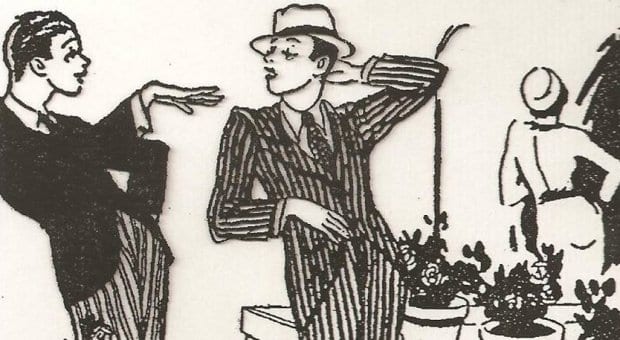Tabloid cartoons depicting effeminate, makeup-wearing homosexuals in early-20th-century Toronto often carried such captions as “Here is a scene you will see just about any day at Eaton’s,” or “Simpson’s on Yonge Street!” according to Steven Maynard, who on May 22 will talk about queer identity in Toronto in the 1920s and 1930s.
Maynard, who teaches about the history of sexuality at Queen’s University, has been studying late-19th- and 20th-century sexuality, with a focus on Ontario cities, for many years. Of course, gay behaviour has a long history, but Maynard will argue that distinct public sexual identities didn’t appear in Toronto until the 1920s and ’30s. He attributes this partially to newly emerging consumer capitalism: “Pansy boys are associated most closely with Eaton’s and Simpson’s department stores. And that’s because it’s where they worked and because the department store is a relatively tolerant workplace.”
While the tabloids depicted pansies as clownish, cute things, lesbians were described as mannish predators or malign influences. “The women that are picked out as ‘hell witches’ and lesbians are more identified with the middle class, so they have more resources than most women and can buy a house and live together… and the press actually located them in Rosedale,” Maynard says.
Maynard’s historical knowledge – and his desire to make it relevant in the present – makes shopping trips a bit more interesting: “If you go through the cosmetics section of the Bay down at Queen, for instance, those are latter-day pansy boys – when I see them I think, ‘Oh, my goodness, do you have any idea that for 70 or 80 years guys like you have been standing here doling out perfume?'”


 Why you can trust Xtra
Why you can trust Xtra


